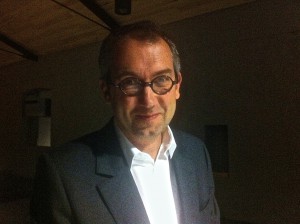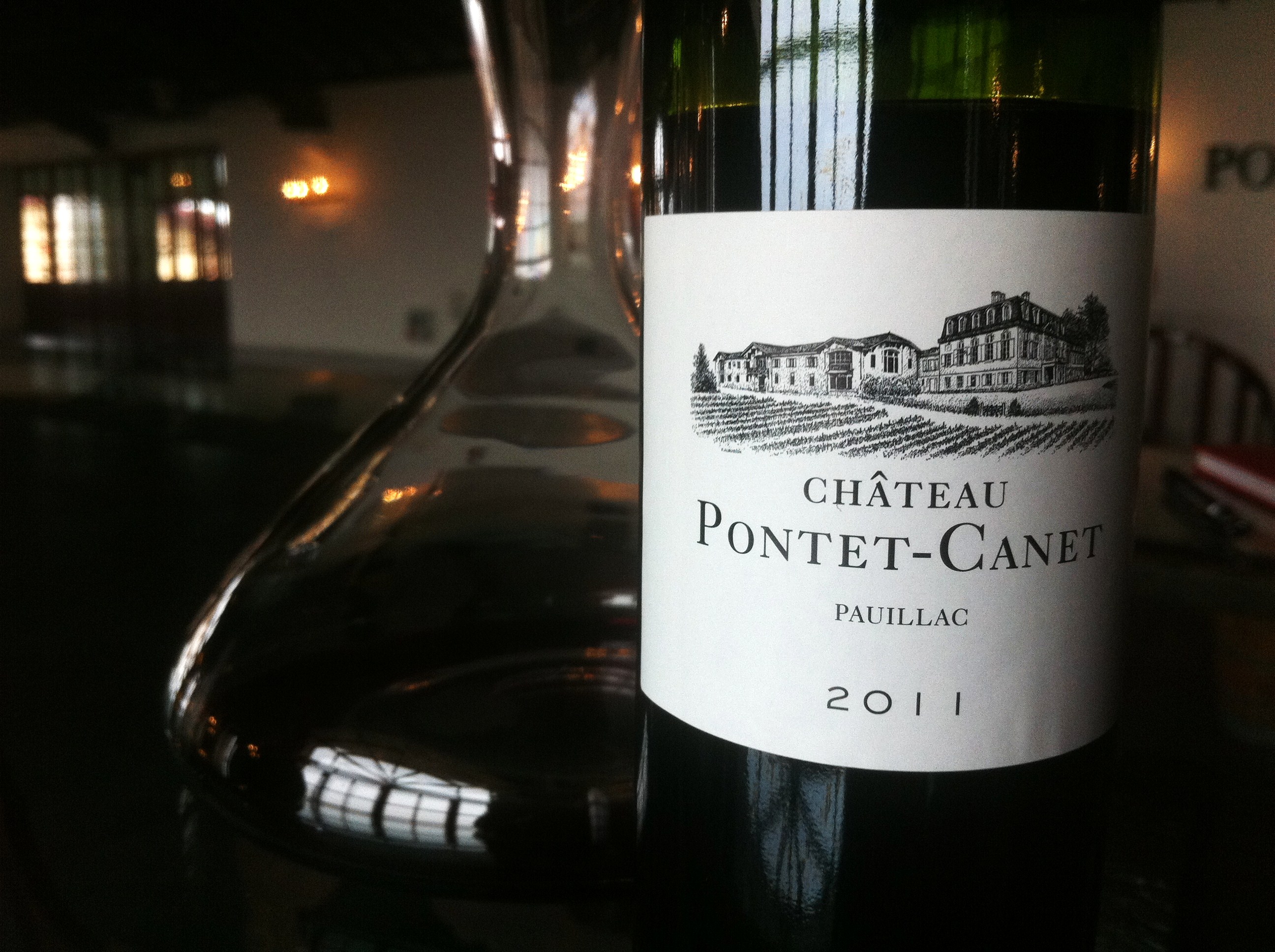Bordeaux Primeurs 2013: Château Palmer
 Despite all the fashionable talk of terroir, it’s funny how, a bit like dogs and their owners, wines come to resemble their masters and mistresses. Château Palmer, which has had a fabulous run of recent vintages, has shown a degree of ambition and sophistication that clearly mirrors that of Thomas Duroux, the winemaking wunderkind now in his tenth year running this top Margaux estate. Duroux’s achievements have come at a price – namely the much higher cost of the grand vin itself – but surely Palmer has never been more consistent [or better?]. So has the estate managed to keep its footing in the testy 2013 vintage?
Despite all the fashionable talk of terroir, it’s funny how, a bit like dogs and their owners, wines come to resemble their masters and mistresses. Château Palmer, which has had a fabulous run of recent vintages, has shown a degree of ambition and sophistication that clearly mirrors that of Thomas Duroux, the winemaking wunderkind now in his tenth year running this top Margaux estate. Duroux’s achievements have come at a price – namely the much higher cost of the grand vin itself – but surely Palmer has never been more consistent [or better?]. So has the estate managed to keep its footing in the testy 2013 vintage?
The answer is a pretty resounding yes. Competitively speaking Palmer ties with Château Margaux for the appellation’s best wine in 2013 [two bright stars in a generally disappointing field]. Stylistically they are chalk and cheese. Palmer has much more muscle definition and power, surprising power for the vintage in fact. It’s not quite as memorable as their 2011 or 2012 here, but in the context of 2013 it is an excellent effort indeed, testament to the terroir, low yields [25hl/ha] but also Thomas Duroux’s determination. Palmer 2013 does not come cheap – at around £1650 [$2700] per case it’s been released at a price similar to 2012. Calls for a substantial cut this year clearly fell on deaf ears. I’ll return to price at the very end; first the growing season.
Temperatures between 1st April and 31st May were the lowest the property has seen in a decade. This led to the growing cycle ten days behind 2012, itself pretty late. The very rainy conditions in May and June caused coulure in the estate’s older Merlots and in the Cabernet Sauvignons, something which did much to reduce yields. The wet weather meant the mildew risk was considerable too. July [fortunately] turned out to be the hottest in fourteen years – it is clear that this month saved the vintage across all Bordeaux – but vine development was still much delayed and an October harvest was on the cards. As elsewhere, September turned out to be a very difficult month – rainy, humid and warm. The corresponding onset of botrytis forced Duroux’s hand and they started picking the young Merlots on Friday 27 September, accelerating the harvest rapidly. They picked a whopping 10 hectares on a single day [Sunday September, 29] – achieved at great cost as the pickers scheduled for harvest were yet to arrive and others had to be found PDQ.
The Merlot harvested was ripe despite the early harvest. The Petit Verdot and Cabernet Sauvignon, though lower in alcohol, had good aromatic profiles and acidities. Merlot came in at 12.5 degrees, Cabernet at 12 degrees. They chapitalised [added sugar] to get the wine to 13 degrees. The delicate nature of the fruit required care in the cellar. Gentle extraction, shorter macerations and cooler fermentations were used to preserve the fruit qualities and not to pick up any rusticity in the tannins. With 10% of the crop eliminated entirely, Palmer 2013 represents just one-third of the remainder, Alter Ego, the second label [but not second wine] two-thirds.
 Thomas Duroux of Château Palmer
Thomas Duroux of Château Palmer
With ten years now at the helm I asked Thomas Duroux what further plans he had for Palmer. This year [2014] will be the first year the property will be fully biodynamic [a journey started in 2010]. It’s part of the goal Duroux has here to see things more holistically and the winery as an organism. The aim is to try and achieve a greater expression of the place, a search for the soul if you like, with equalling the first growths as the ultimate target.
I think many would agree that Palmer is already a de-facto first growth. The consistency and quality of the vintages 2008-2013 have been exceptional. Still I think it’s fair to say that quite a number of Palmer followers have been alienated by the steady prices increases here over the past decade, even if pricing has softened recently. Price, of course, has been the driving factor in calibrating the quality of Bordeaux wine since the 1855 classification [and well before that]. So if you see yourself travelling towards the first growths, then your prices need to catch up. But for a great many of us who can remember buying Palmer for £50 a bottle [or less], it is now pretty much out of reach.
We could opt for Alter Ego. The wine provides something of the Palmer experience but in a more immediately accessible style and at a cheaper price. It is firmly not seen as a second wine, more an alternate label. It can seduce too. The 2013 is a good effort, better than many classed growths in Margaux this year. Still there are other wines to consider [more on this later].
Château Palmer, Grand Cru Classé, Margaux
Deep and saturated; very bold colour for the vintage; very vibrant at edge; creamy fruit; very pure and layered; real plushness; very attractive fruit on entry but concentrated; muscular in the middle but moves towards a nicely measured and well-mannered finish. Excellent effort. [49% Merlot, 51% Cabernet Sauvignon]. Drink 2018-2030. 91-93
Alter Ego, Margaux
Deep and saturated look; vibrant at edge; legs in the glass; attractive fruit on the nose; nicely layered and composed; attractive fruit on the palate; pretty sturdy with nice sap and chew. Sturdy and solid. Goodish length on the finish. [46% Merlot, 46% Cabernet Sauvignon, 8% Petit Verdot]. Drink 2017-2023. 87-88+
Tags: Alter Ego, Biodynamics, Bordeaux, Bordeaux 2013, Cabernet Sauvignon, Chateau Palmer, cru classe, Margaux, Merlot, Petit Verdot, Thomas Duroux


